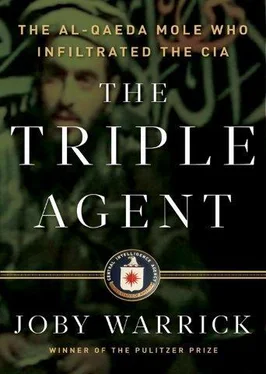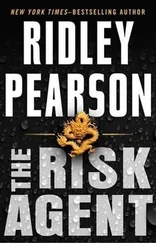The dislike was mutual. In private, the case officers and analysts complained about the gun toters as “knuckle-draggers” and “hot-house flowers” with egos to match their inflated biceps. Both views were stereotypes, but Matthews was hypersensitive to male skepticism about her ability to do a job. She had battled against it for her entire career.
The CIA still was very much a man’s world when Jennifer Matthews signed up on January 3, 1989. Three other women joined the agency the same day, and the foursome quickly concluded that they needed to stick together—“the only women in a sea of men,” one member of the quartet later recalled.
By chance, they shared a similar look: four white women in their mid-twenties, of roughly the same height and build, with brown hair and size 4 clothes. When they traveled together as a pack, as they often did, they turned heads in Langley’s buttoned-down corridors. The four lunched together in the cafeteria, took group vacations, and even planned one another’s weddings. Matthews felt obliged to serve as leader because she was the oldest by a few weeks. She also was the most ambitious. When the new recruits were asked during orientation about their future plans, Matthews answered without hesitation: “I’m going to be the DCI”—director of the Central Intelligence Agency.
That kind of unabashed ambition, and a belief that she could conquer anything through willpower and hard work, was a lifelong trademark. As a young girl, the middle of three children born to a press operator and a nurse in a working-class suburb of Harrisburg, Pennsylvania, she bored into her books while her girlfriends chased boys and partied. She grew up with a strong feminist streak and a belief in a divine will that ultimately shapes all human destiny. Her social world as a child and teenager revolved around a small Christian fundamentalist congregation that embraced both patriotism and a literal interpretation of the Bible. Her theology evolved as she grew older, but she considered herself an evangelical Christian for the rest of her life.
After high school she attended a small Baptist university in western Ohio called Cedarville, a school that advertises its commitment to teaching a creationist approach to science. There she studied broadcasting and met a fellow cross-country runner whom she later married, a religiously devout chemistry student named Gary Anderson. Both later attended nearby Miami University of Ohio, where Matthews earned a master’s degree in political science. She worked briefly as a paralegal before deciding, with encouragement from a relative who served in the intelligence community, to try for a job at the CIA.
Very few women had been permitted to join the elite fraternity of case officers in those days, so Matthews and her three new CIA friends took positions that traditionally were open to women. Matthews became an imagery analyst and spent many hours poring over satellite photos of suspected chemical weapons factories in Libya. A natural writer, she later became a reports officer, a job that entailed translating raw intelligence from the field into concise prose.
Even there, Matthews was driven by a perceived need to outshine the men around her just to be accepted, remembered a female colleague who was part of her close circle of friends.
“We worked long, hard hours. We went the extra mile. And we routinely outran our male counterparts,” said the friend, who, like Matthews, eventually became an undercover operative with a protected identity.
Matthews briefly followed her husband to Geneva, where he worked for a Swiss company. But afterward the couple settled into a suburban Washington lifestyle that was organized largely to support her career. Because they worked in different cities—Matthews in the Washington suburbs, her husband in Richmond—they bought a house roughly in the middle, near Fredericksburg, Virginia, and logged more than a hundred miles a day in their commutes. But Matthews kept her maiden name, and when children arrived, the couple employed nannies so she could quickly return to the office. Friends say she adored her three children, but her brain was wired for work. Staying at home would have been as alien to her as growing fins and living in the ocean.
“She was very much a feminist in that way, yet she also was extremely traditional in her views about marriage and family,” said the agency friend. “There was a dichotomy about her that allowed her to separate different parts of her life. It’s part of what made her a good analyst.”
Matthews rejoined the agency after returning from Switzerland in 1996, but with entirely new aspirations. She shifted from the agency’s analytical division to the Directorate of Operations, the side of the CIA that runs clandestine missions overseas. The new job would require weeks of physically rigorous training at the CIA boot camp known as the Farm. Eventually she would also have to give up her right to her own name, becoming an officer “under cover.” Like Valerie Plame, her soon-to-be-famous colleague in the operations division, her very identity was a government secret.
Matthews truly hit her stride at the CIA when she joined a small unit within the directorate’s counterterrorism division known internally as Alec Station. It consisted of a mix of officers from different backgrounds, all devoted to the study of a little-known Islamic terrorist group that called itself the Base, or al-Qaeda. When she first joined in 1996, the unit was regarded as a CIA backwater. Terrorist groups were a second-rate threat, and al-Qaeda was a bit player compared with the better-funded Hezbollah and Hamas. But things began to change in 1998 after al-Qaeda simultaneously bombed two U.S. embassies in Kenya and Tanzania, killing more than 220 people. The attacks catapulted bin Laden to a spot on the FBI’s ten most wanted list. Suddenly Alec Station and its analysts were in demand.
As a group the officers became so al-Qaeda obsessed that they jokingly referred to themselves as the Manson Family. The hard part was convincing official Washington that Osama bin Laden was a threat to the U.S. homeland. Led by Matthews’s boss, a blunt-spoken analyst named Michael Scheuer, they eventually won the backing of senior CIA leaders, including Director George Tenet, and Cofer Black, who headed the Counterterrorism Center. The officers in the late 1990s drew up contingency plans for killing bin Laden and driving his terrorist allies out of Afghanistan, using friendly Afghan fighters and the agency’s newly acquired unmanned aerial vehicle, the Predator. But the Clinton administration passed on a chance to assassinate bin Laden in 1999, and the newly elected Bush administration deflected Tenet’s urgent requests for action and ultimately postponed any significant policy discussions about al-Qaeda until September 4, 2001. Seven days later al-Qaeda–trained hijackers crashed commercial jetliners into the World Trade Center and the Pentagon.
The morning of the attack was a normal workday at Langley, and many CIA employees were just arriving at the office as the first plane hit the World Trade Center’s South Tower at 8:46 A.M. When the second tower was struck seventeen minutes later, there was an audible gasp of recognition: This is the work of al-Qaeda .
Cofer Black, the CIA’s counterterrorism director, assuming that CIA headquarters was likely on the terrorists’ attack list, ordered most of the staff out of the building. He and the Alec Station analysts stayed behind and got to work. Some did not see their families again for days.
“We’re at war now, a different kind of war than we’ve ever fought before,” Black told the counterterrorism team as he prepared to issue marching orders. “We’re all going to have to do our part. And not all of us are going to make it back.”
Читать дальше












